What Is the Paleo Diet?
Many have heard of it and an increasing number of people follow it, but just what is the paleo diet?
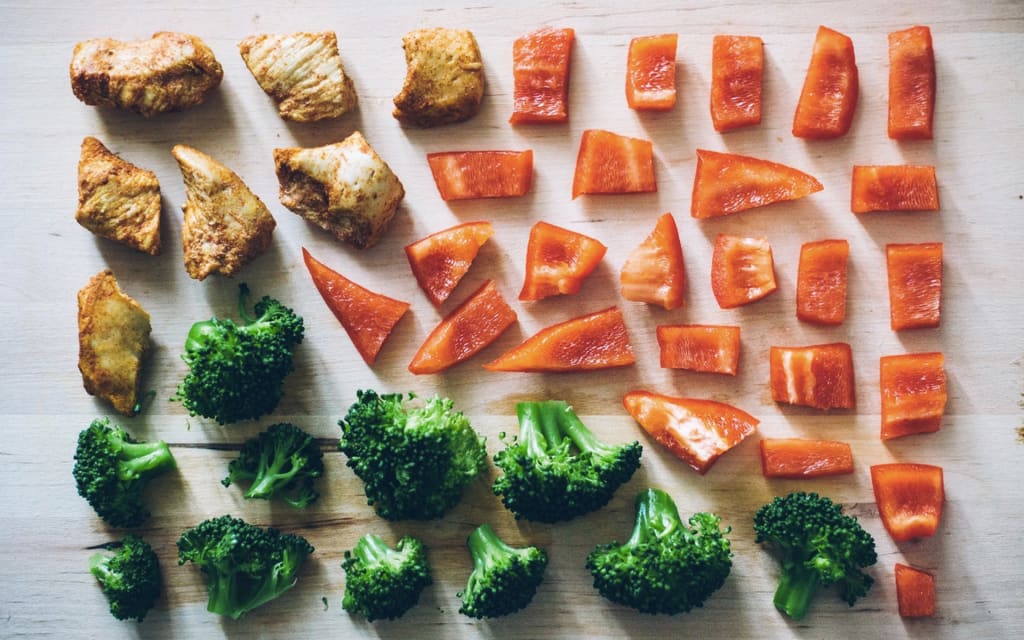
Unless you've been living under a rock, you've probably heard about how the paleo diet is becoming increasingly popular with athletes and couch potatoes alike. You may have heard about it after watching a show, reading an article, or talking to a friend. But is the paleo diet just a fad? The answer is a resounding "no!" Although this diet may not be for everyone depending on individual beliefs and needs, there is nothing about the paleo plan that resembles the typically dangerous "fad diet." We'll fill you in on everything you need to know about the question "what is the paleo diet?" below.
Introduction to the Paleo Diet
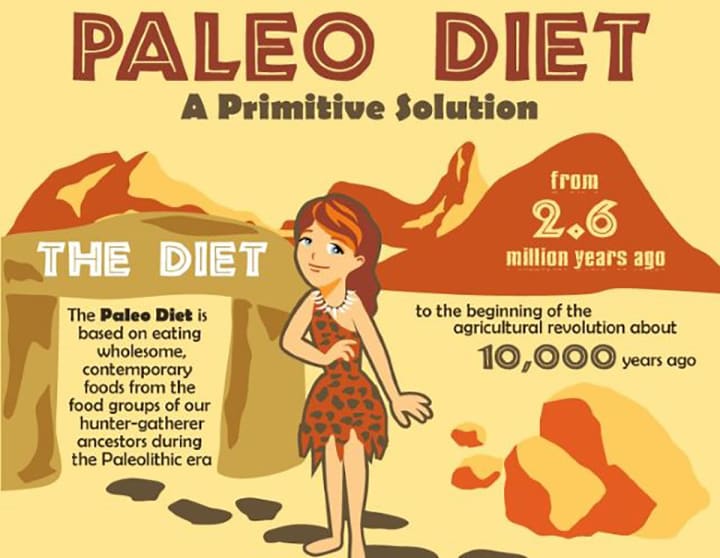
Image via Women's F Blog
What is the paleo diet? Simply put, it is all about eating the same sort of food our ancestors used to eat before the advent of agriculture. Back in the day, when our human ancestors were still hunters and gatherers, they ate a diet that was high in fat, moderate in protein, and low in carbohydrates. This balance of nutrients is what is considered the best for humans according to followers and advocates of the paleo diet. After all, many chronic diseases we have these days, such as heart problems and diabetes, were brought on and largely influenced by modern humanity's current diet, which is often high in carbohydrates and refined or processed food.
The paleo diet should not be confused with the gluten-free diet, although strict followers of paleo typically eat an almost-gluten-free diet as well because of the absence of grains. (Gluten is present in grains like barley, wheat, and rye.)
Paleo Diet Vs Other Diets
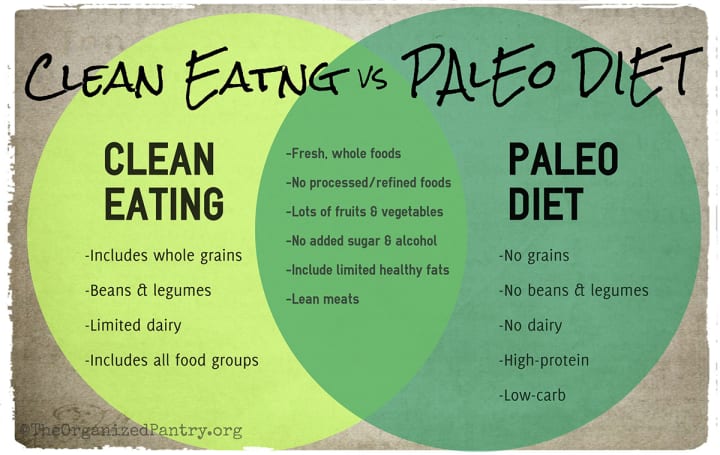
Image via The Organized Pantry
Essentially, the paleo diet follows what is believed to be the healthiest way humans can eat according to genetics. The argument is that humans have been eating paleo foods for hundreds of thousands of years, whereas we’ve only started adding grains to our food a few thousand years ago.
In the paleo diet, it is believed that the human body has not yet adapted to the high-carb and high-grain diet and that’s the cause of a lot of today's health problems. This is one reason why the paleo diet is also known as the "ancestral diet."
Going back to what our hunter-gatherer ancestors used to eat is perceived as a natural way to maintain health and prevent diseases such as infertility, Parkinson’s, depression, cancer, obesity, heart disease, and diabetes.
A significant portion of people who switch to the paleo or ancestral diet are doing so to reap the health benefits that are associated with it, such as:
- Balanced energy levels throughout the day
- Clear skin
- Better teeth
- Weight loss by burning off excess fat and not gaining unwanted fats
- Stable blood sugar levels
- Reduced allergic reactions
- Anti-inflammatory effects
The health benefits above are brought on by food choices that eliminate dairy, grains, and legumes. Positive meal choices include the increased intake of lean meats, healthy fats, vegetables, fruits, seafood, nuts, and seeds.
The paleo diet does not count calories or follow portion control, unlike most diets that have become popular in recent times. This alone makes this diet less stressful than others that are too restrictive or have too many rules.
Another feature of the diet that makes it different is that intermittent fasting is permitted. This means you can skip a meal or two on occasion because our ancestors used to have to hunt for their meals, and of course, not all hunts were successful. The intermittent fasting is not meant for weight loss, but rather to achieve optimum health, such as when you don’t feel like eating, or if your previous meal was particularly rich.
While no diet is 100 percent perfect for everyone, there is no reason why the paleo diet cannot keep someone healthy and at peak performance level.
Some supplementation might be needed with this diet. There is no harm in having some probiotics and vitamin D. Nibbling on some seaweed will help with magnesium and iodine, but most of the time, simply eating a balanced meal will take care of your vitamins and minerals needs.
Which Foods Can I Eat on the Paleo Diet?
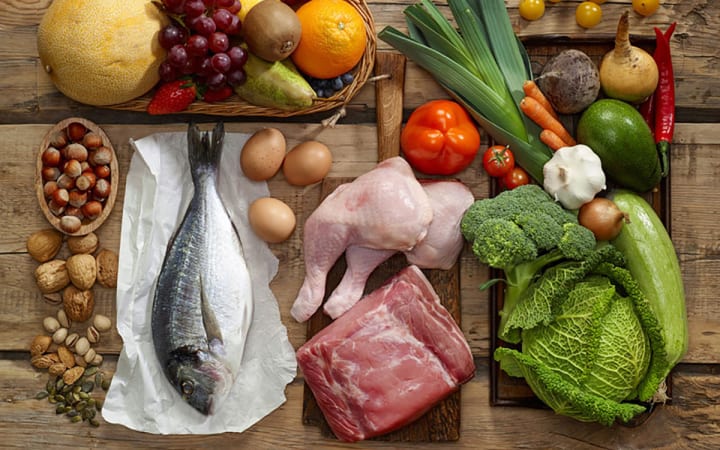
Image via The Paleo Diet
The next question to ask after learning the answer to "what is the paleo diet?" is "what can I eat?" Short answer? A LOT! The paleo diet is not restrictive, but rather a way to eat correctly. You can have fats, proteins, and carbs. However, you will have to choose better sources of these nutrients than, let’s say, a typical burger from a corner joint. Again, there is no calorie counting and no portion control, either. Your body will naturally limit the amount of food you eat, because eating unprocessed food such as fruits for your carbs can make you feel full faster (as opposed to chowing down on some cookies).
You can have plenty of good fats, such as:
- Coconut oil
- Duck fat
- Beef tallow
- Avocado oil
- Macadamia oil
- Olive oil
You can also have loads of healthy proteins, such as:
- Poultry (duck, chicken, turkey)
- Pork
- Eggs
- Grass-fed beef
- Lamb
- Shellfish
- Organ meats (liver, heart, kidney)
- Wild caught fish
- Vegetables (frozen or fresh of all kinds, either cooked or raw)
- Starchy vegetables and root crops, such as yams and sweet potatoes
And of course, you won’t have to go without carbs for your sweet tooth! You can have low to moderate amounts of the nuts and fruits below:
- Berries for their antioxidants and other nutrients
- Citrus fruits for vitamin C
- Any organic, in-season, and local fruits
- Macadamia nuts for omega-3/healthy fats
Note: you can cut out fruits and nuts if you are trying to lose weight, have autoimmune problems, or have digestive issues.
Foods to Avoid
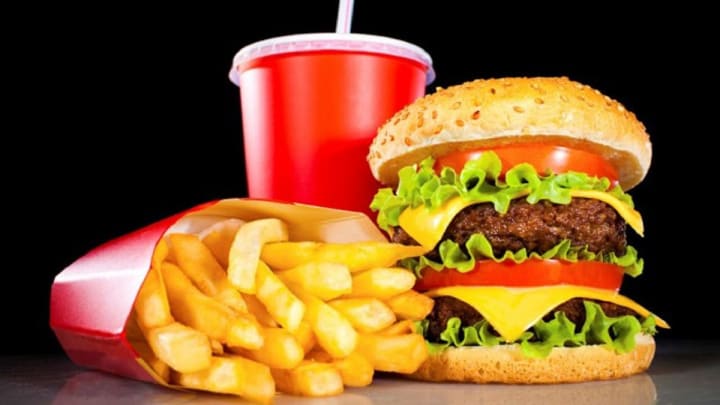
Image via Fabvana
All diets have restrictions, and since you have to follow the way our ancestors ate for the paleo diet, this means no going to fast food chains, no junk foods, and no alcohol. Below are what you are not supposed to eat for the paleo or ancestral diet.
Remember, legumes and grains are a big NO! You will have to cut out the following:
- Rye
- Barley
- Oats
- Brown rice
- Corn
- Peanuts
- Pinto beans
- Kidney beans
- Soy
- Black eyed peas
- Navy beans
You can’t have vegetable seed oils either. No partially-hydrogenated or hydrogenated vegetable oils such as:
- Soybean oil
- Peanut oil
- Corn oil
- Canola oil
- Margarine
- Sunflower oil
- Safflower oil
Note: avocado oil and olive oil are fine, but you are not allowed to cook with them. You can, however, use them for making salads and to drizzle over food. Yum!
No more fruit juices or sugary foods! Say goodbye to the following:
- All packaged sweets
- Pastries
- Potatoes
- Refined sugar
- Cereal
- Cakes
- Ice cream
- All juices in cartons and/or cans
- Soft drinks/soda
- All added sugar or food with table sugar
Wait, limited dairy? What does it mean?
This is a more subjective area of the question "what is a paleo diet?" Some followers of the diet do not have dairy at all, but if you really want to have some, a bit of cream and butter is permitted. Raw and/or fermented dairy can be okay (depending on how strict you are), but in small quantities only.
Health Notes About the Paleo Diet
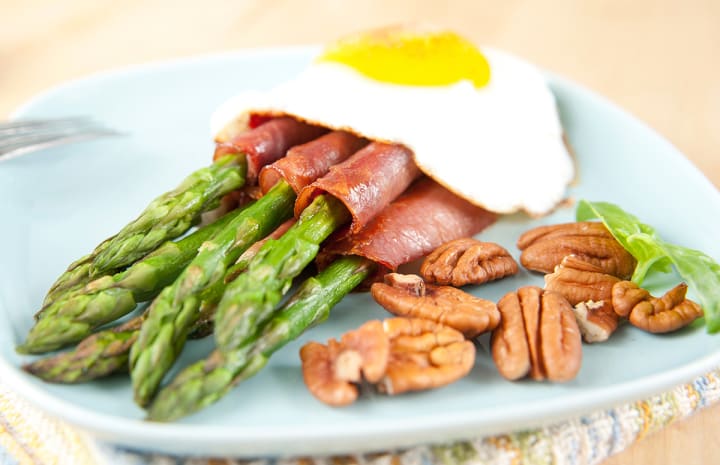
Image via Best Health
- As with all diets, over-exercising and not getting enough sleep are not encouraged. You will still have to get adequate sleep and avoid activities that put too much stress on your body.
- Exercising and engaging in physical activities such as walking are highly encouraged, as well as participating in mentally stimulating pastimes for optimum health.
- While there are plenty of write-ups online about sick people getting better when they switched to the paleo diet, the diet is not meant to cure or treat any diseases. The diet may help alleviate some symptoms or minimize the signs, but using the plan as a cure-all is not recommended. Instead, the paleo diet can help manage some illnesses until further studies are conducted.
- The paleo diet can be as expensive or as cheap as you want it to be. However, in some cities, organic food may incur a high cost due to limited supply and high demand.
- Although alcohol is generally not allowed in the diet, a little won’t hurt. After all, the paleo diet adopts the 85:15 rule, which allows followers to indulge in up to three non-paleo meals a week.
- Eating out is allowed on the paleo diet. Simply be smart about your food choices. Restaurants will be fine with you requesting some tweaks with your food, such as forgoing buns or requesting no processed salad dressing.
About the Creator
James Porterson
Former obese teen turned nutritionist. Enjoys writing about staying active and proper nutrition.
Enjoyed the story? Support the Creator.
Subscribe for free to receive all their stories in your feed. You could also pledge your support or give them a one-off tip, letting them know you appreciate their work.






Comments
There are no comments for this story
Be the first to respond and start the conversation.